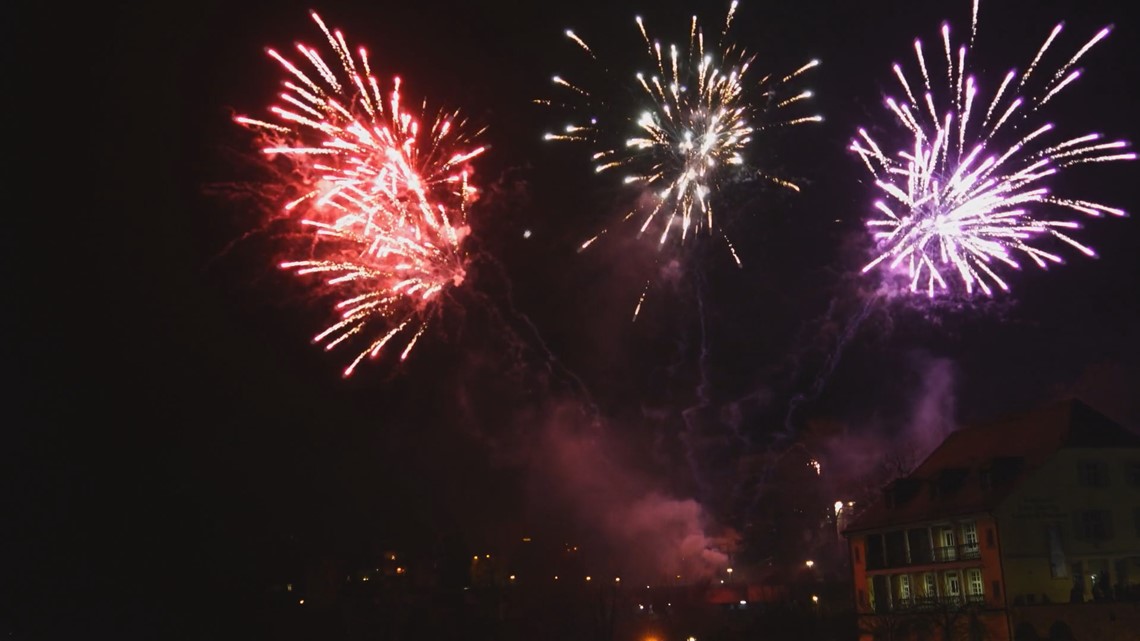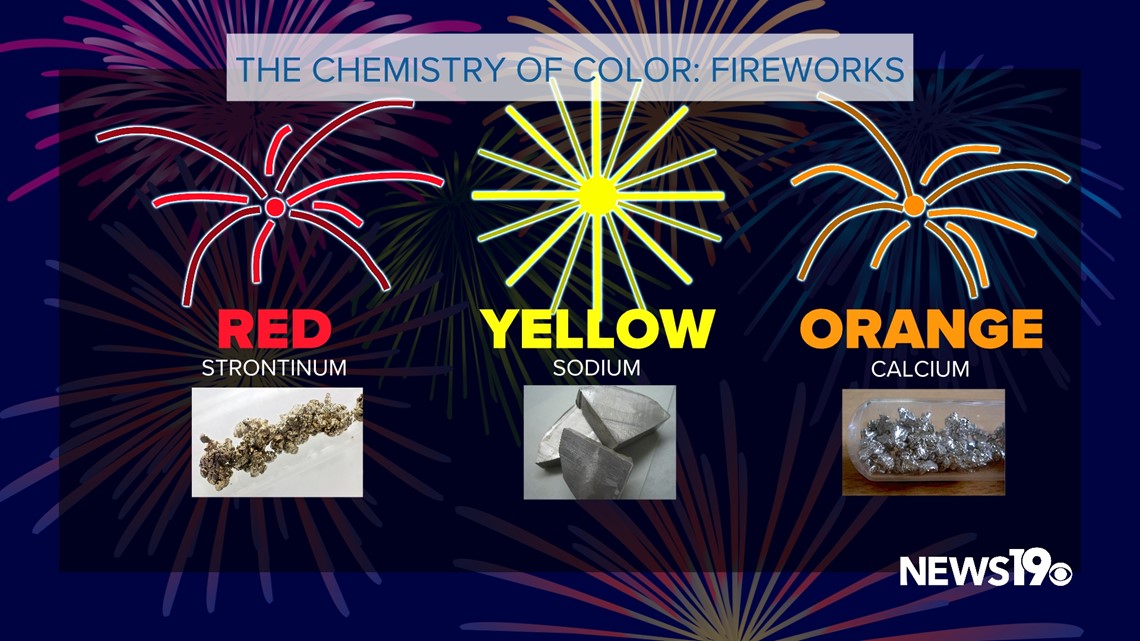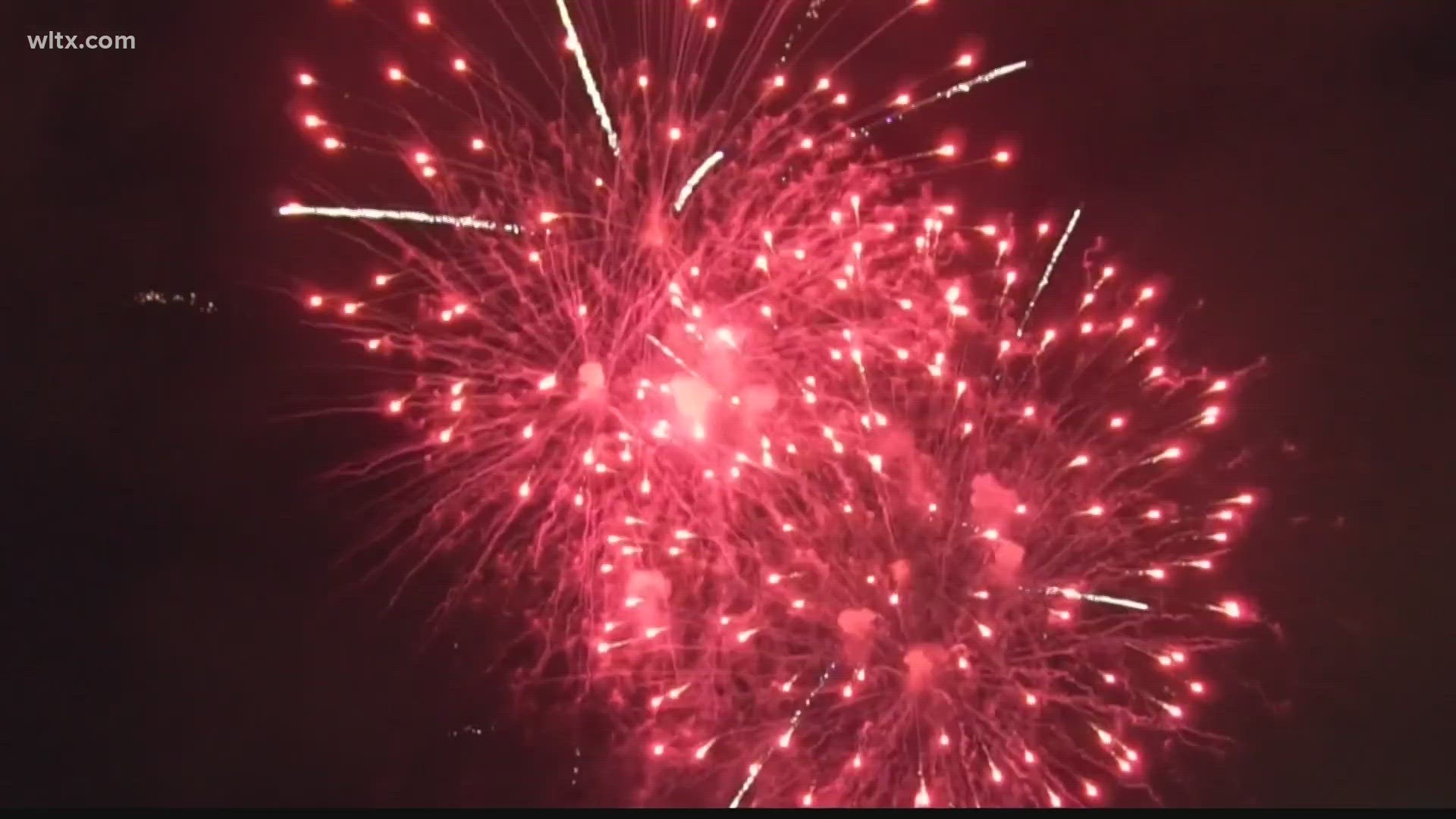COLUMBIA, S.C. — No 4th of July celebration is complete without fireworks. There’s some interesting science behind how sparkling colors are made.
While fireworks are used for many celebrations today, they date back over 1000 years. According to the American Pyrotechnic Association, they were first made around 6-900 AD in China when alchemists created gunpowder inserted into bamboo tubes.
This technology eventually spread into Europe by the 1400s and was refined into fireworks we are more used to today.
The pyrotechnics were used in religious festivals and by European rules for entertainment.


The tradition of using fireworks for big events came over to the United States, and since its first celebration, fireworks have been used to celebrate the 4th of July.
When continuing this tradition, you will likely run into fireworks that range over every color imaginable.
Firework manufacturers have gotten the most vivid colors by picking certain periodic elements that burn when ignited.


Red, yellow, and orange are created by strontium, sodium, and calcium, respectively.
Green fireworks contain barium, blue contains copper, and purple is a mix of strontium and copper. White fireworks have an assortment of titanium, zirconium, and magnesium.
Knowing the chemical science behind fireworks makes you appreciate how we get all the reds, whites, and blues you will see in our night skies over the coming days.



